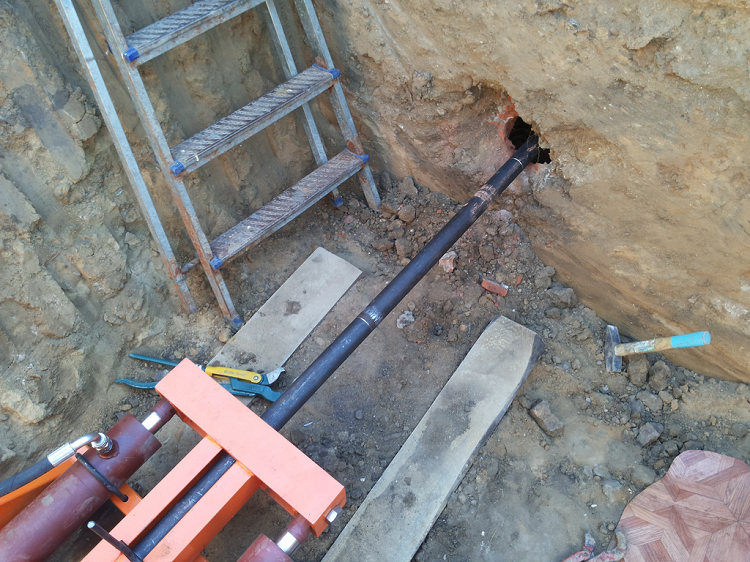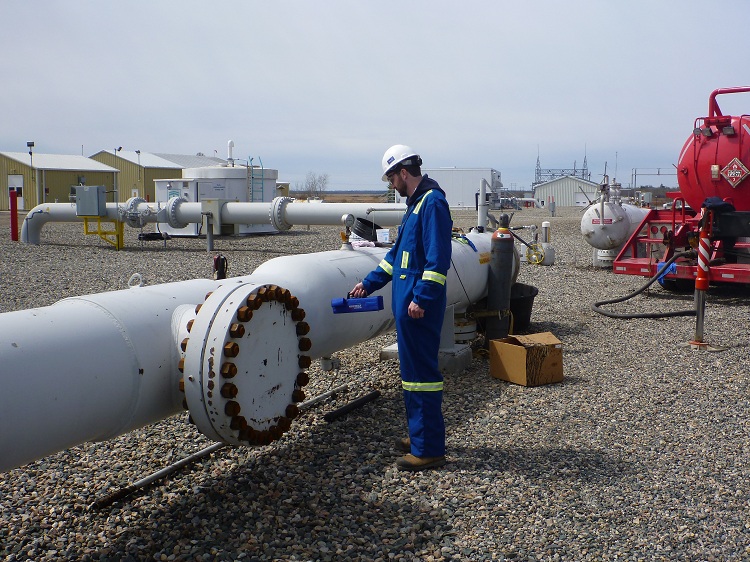Equipment for heating networks, like any other, periodically needs to be repaired. The main task of repair work is to identify and troubleshoot problems in the system to ensure its normal functioning. Repair of heating networks is a set of measures that are aimed at maintaining, as well as (in some cases) modernizing communication or its individual components.
Content
- 1 Types and methods of installation of heating systems
- 2 Channel installation of heating mains
- 3 Channelless mounting
- 4 Installation of external heating mains
- 5 Repair of heating systems
- 6 Scheduled preventive repair of heating systems
- 7 Features of planning repair work
- 8 Stages of repair of a heating main
Types and methods of installation of heating systems
There are two main types of heating systems:
- single tube;
- multi-tube.
Helpful information! One-pipe heating networks are laid mainly outside the city limits, and multi-pipe heating systems are installed in cities and other settlements.
In addition, depending on the type of material, pipes for the construction of heating mains are divided into:
- cast iron;
- steel;
- asbestos cement.
For thermal insulation of finished communications use:
- mineral wool;
- polyurethane foam (PUF);
- different polymers.
The construction of heating mains is a rather complicated process from a technical point of view. Laying a modern heating main implies the presence of special knowledge in the construction field, as well as the use of various construction equipment.
Laying heating systems can be performed in several ways, depending on various factors:
- channel;
- channelless;
- outdoor.
Channel installation of heating mains
Channel installation involves the use of special channels in which pipes of the heating network are laid. Such channels, as a rule, are made of the following materials:
- concrete;
- reinforced concrete.
Consider the main stages of laying concrete communications channels that transport heat to consumers:
- First of all, using special equipment, they dig trenches under the pipes.
- Then the surface of the channel is leveled and formwork is prepared.
- Concrete is reinforced, as a result of which its technical characteristics are increased. Reinforcement can increase the strength of the channel, as well as reduce heat loss in the system.
- Paint is applied to the pipes, which performs the function of protecting against the harmful effects of corrosion.
- Pipes are mounted on special sliding supports.
- Thermal and waterproofing of the pipeline is carried out.
- The finished channel is covered with slabs and covered with earth.
- The earth is compacted and landscaping is being carried out on the site on which the pipeline was installed.
The reinforced concrete channel is mounted much easier. After the trench is dug, and the concrete trays are mounted, the pipeline is installed. After insulation work, the canal is closed and covered with earth.
Channelless mounting
This method allows you to lay pipelines faster than in other cases and is the most common today. This is also associated with a minimum expenditure of funds and energy during its implementation.
Consider the main stages of laying heating pipelines in a non-channel way:
- First, a wide channel is dug up.
- The bottom of the trench is leveled and covered with sand.
- After laying the pipes, work is done to isolate the joints.
- Then sand is poured and the trench is closed with protective plates.
- In the end, as in the previous method, carry out the improvement of the site.
If the heating main is mounted by this method, it is necessary to pay attention to the following points:
- installation of the pipeline is carried out only in dense, dry soil, which is not washed by groundwater;
- the depth of the communication should be in accordance with the required standards (from 0.5 to 3 m);
- the sand layer at the bottom of the trench should be at least 10 cm;
Installation of external heating mains
An external (open) heating main is a communication that is mounted on the surface of the earth on special supports. Construction of heating mains by the external method is extremely rare. This is due to the fact that such installation carries certain difficulties, especially with the arrangement of insulation. However, in some cases, such a communication installation is the only way out (for example, with a densely built-up site and the presence of extensive underground networks).
Important! First of all, the construction of heating mains requires the preparation of a preliminary project. This applies to all types of gaskets, without exception. The project should include a plan for following the heating main and contain the location of all street objects. This is a necessary event, which allows you to pre-calculate all the installation difficulties for a specific situation.
The installation itself takes place according to the preliminary project and consists of 3 main stages:
- First of all, supports of the corresponding height are mounted, on which pipes will subsequently be installed.
- Pipe installation in progress.
- Thermal insulation material is installed on the pipes.
Repair of heating systems
Heat pipes mounted underground, wear out sooner or later, which entails the emergence of various emergency situations. The consequences of accidents are eliminated through the repair of heating systems, which includes the following work:
- repair of individual segments of thermal communication;
- replacement of individual components;
- installation of additional insulation or other protective structures.
Repair work, as a rule, is carried out in cases, even if you have to deal with shabby structures. In any case, it is worthwhile to understand that such a communication update has a temporary effect.

Repair of heating systems can include various works - from repairing individual elements of the system to the complete replacement of long sections of pipes and equipment
In some cases, repair of the heating system is not possible and its complete reconstruction is carried out. For reconstruction, a necessary step is the development of a communication project taking into account the norms and rules of the current legislation.
When re-identifying a malfunction in the heating system, it can be completely replaced. Otherwise, the risk of an emergency increases. Regardless of the situation, it is always necessary to conduct a preliminary inspection of communication, which will help to identify the problem and, based on the information received, develop a repair plan.
Inspection is aimed at identifying the following factors:
- search for emergency sections in the pipeline;
- Identification of potentially hazardous areas that may cause a system malfunction in the future.
- analysis of the soil in which the pipeline is laid.
Scheduled preventive repair of heating systems
A very important point in the repair of heating systems is the timely detection of a malfunction in communication. This prevents unexpected emergencies and extends the life of the system as a whole. As a result of this, it can be concluded that the normal functioning of the heating main depends not only on compliance with operational standards, but also on the timely completion of preventive maintenance (PPR).
The SPD includes 4 types of events:
- periodic scheduled inspections;
- preventive examinations;
- ongoing repair work;
- capital repairs.
Periodic scheduled inspections are carried out according to an agreed and approved schedule through certain time periods. This event allows you to establish whether the heating system needs ongoing or major repairs.
Preventive repairs are carried out by disconnecting certain sections of the communication. Such repairs are aimed at fixing minor problems or cleaning the system.
Note! The PPR system involves the arrangement of a special repair site (base). In addition, quality control of the repair work performed must be carried out without fail.
The classification of repair work into capital and current depends on the degree of breakdown, as well as the volume of work and material costs. Maintenance, as a rule, is carried out at the expense of the enterprise. Capital repairs of heating systems are carried out at the expense of the state. In most cases, if the heating system needs major repairs, a repair workshop with all the necessary equipment is organized with it.
According to the PPR system, the following points are determined:
- the labor costs that are required to carry out repair work are calculated;
- the time frame for the work is determined;
- types of repair work are agreed upon;
- the category of complexity is determined;
- the supply of the repaired area with the necessary tools, as well as spare parts and other materials, is organized.
Features of planning repair work
Repair work aimed at troubleshooting in heating systems must be performed as necessary, based on the results of routine inspections and tests. Repair work, as a rule, is carried out in the summer period when heating of premises is not required, which is the main function of such communication.

Scheduled repair of the heating main is carried out in the warm season, when the system does not work and there is an opportunity to stop the movement of the working environment
Regardless of the situation, repair work is carried out as soon as possible. To reduce the duration of this event, it is recommended that the following repair methods be performed:
- aggregate;
- nodal.
These methods involve replacing the heating main or failed equipment with prepared analogues. For successful repair activities it is very important to prepare in advance all the necessary equipment, spare parts, materials and other necessary devices.
The preparation of annual and monthly plans for major repairs is carried out, as a rule, 4 months before they begin. Activities aimed at modernizing the existing communication are prepared 6 months before the start of the planned year.
Stages of repair of a heating main
Repair of heating systems is a very important event and is carried out in accordance with all the norms and rules specified in the relevant documentation. In most cases, repair work aimed at troubleshooting a system includes the following steps:
- Detection of problem areas and various defects in the heating system. For these purposes, special equipment is used.
- Dismantling and cutting of floors in which breakages were detected.
- Cleaning the channel from various contaminants.
- Phased installation of heating and insulation work.
- Installation of appropriate valves.
Important! Major and current repairs of the heating main are carried out by special repair teams, as well as repair personnel of the heating network. In addition, operating personnel must be present at the repair site. The repair manager is usually the district head.
- Hydraulic tests of the pipeline and components.
- Installation of protective floors (slabs).
- Installation of waterproofing.
After completing all of the above items, the pit is filled up with sand and earth and then compacted. A layer of gravel is laid on top and poured with concrete. Depending on the specific case, the cost of repairing or replacing the heating system may be different.










